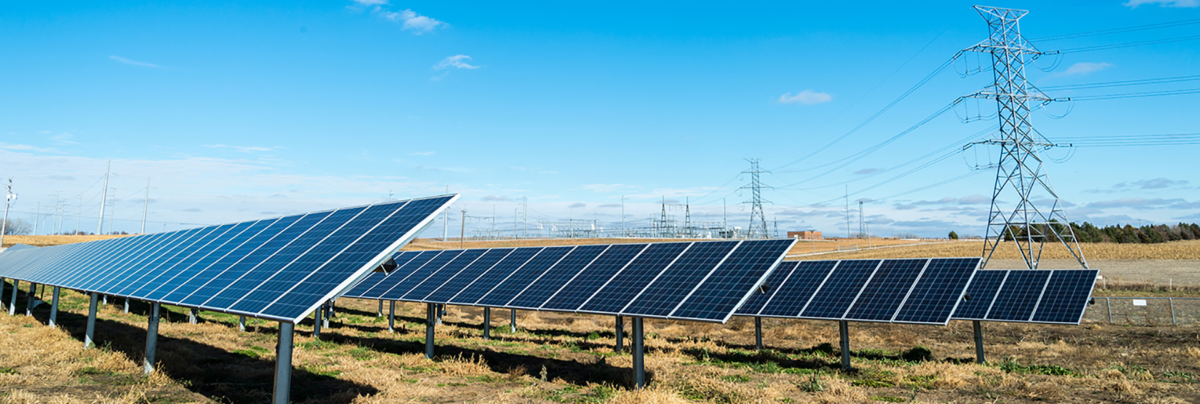A letter signed by nearly 200 solar and energy storage businesses was sent to Congress, requesting legislation to reform processes that are bottlenecks to clean energy development.
The letter calls for reforms to permitting, project siting, transmission, and public lands access for solar and storage projects. Find the letter and full list of signees here.
Solar Energy Industries Association (SEIA) president and chief executive officer Abigail Ross Hopper said the hundreds of billions of investment dollars depend on the ability of developers to have clean energy projects sited, permitted, and efficiency interconnected with a modern transmission system.
Wood Mackenzie said the solar industry could reach 673 GW deployed by 2034, but there is a 200 GW difference between high- and low-case solar deployment forecasts. Policy decisions weigh heavily on these outcomes, it said.
“Lawmakers in both parties understand the importance of getting new energy infrastructure built quickly and efficiently,” said Ross Hopper. “Now is the time for policy action to strengthen America’s energy industry and support local economies with jobs and private investments.”
The companies requested the following reforms:
- Modernize Federal Energy Permitting: Streamline and standardize the permitting process at the federal level, while supporting environmental safeguards.
- Create Project Siting Partnerships at All Levels of Government: Encourage federal, state and local authorities to work together to identify and designate appropriate sites for clean energy development, including on underutilized and disturbed lands.
- Build Out Transmission Capacity: Invest in transmission planning, build out, and grid modernization efforts to maximize transmission capacity and unlock the full potential of solar energy, especially in remote regions with abundant solar resources.
- Enable Administration to Reach Public Lands Goals: Simplify the process for clean energy generation and transmission projects to access public land leases while maintaining environmental conservation standards.
- Foster Interagency Collaboration: Empower federal agencies with siting authority — like the Federal Energy Regulatory Commission, Bureau of Land Management, and Department of Energy — to create a central clearinghouse for permit applications to ensure a streamlined approval process for critical transmission infrastructure.
Interconnection queues across the United States are piling up with solar and energy storage projects ready to be developed and installed. The sluggish process is creating unprecedented bottlenecks. This is true for developer AES, which has more than 50 GW of capacity waiting to move forward.
“…these projects are ready to move forward and will generate critical economic investment and create jobs in local communities across the country, but they require swift permitting action and transmission infrastructure upgrades to ensure we can advance a clean, reliable energy future,” said Amanda Smith, vice president for external affairs, AES renewables.
Virinder Singh, vice president of regulatory and legislative affairs, EDF Renewables, said current laws are not set to enable the nation to build generation and transmission at the scale needed to support economic growth. He said that federal leadership is needed to “reach the moment.”
“A lack of transmission capacity is the biggest barrier to the continued growth of the renewable industry,” said David Mindham, director of regulatory affairs for EDP Renewables North America. “The proposed reforms will remove these barriers, creating thousands of new American manufacturing jobs and supporting local economies.”
The Department of Energy recently released a roadmap report for meeting the nation’s needs for transmission interconnection reform to support the energy transition. The report presents 35 interconnection improvement solutions developed through a DOE stakeholder engagement process launched 22 months ago, known as the Interconnection Innovation e-Xchange (i2X) program.
One of the roadmap’s “long-term” solutions is to “explore options” to allow interconnection customers to self-fund and provide their own interconnection studies, subject to transmission provider oversight, rules, and requirements. Tesla said in late 2022 that with access to grid models, the company could estimate a project’s interconnection costs with an informational study in less than two weeks, while two trade groups at that time renewed their call to allow third-party interconnection studies.
This content is protected by copyright and may not be reused. If you want to cooperate with us and would like to reuse some of our content, please contact: editors@pv-magazine.com.









By submitting this form you agree to pv magazine using your data for the purposes of publishing your comment.
Your personal data will only be disclosed or otherwise transmitted to third parties for the purposes of spam filtering or if this is necessary for technical maintenance of the website. Any other transfer to third parties will not take place unless this is justified on the basis of applicable data protection regulations or if pv magazine is legally obliged to do so.
You may revoke this consent at any time with effect for the future, in which case your personal data will be deleted immediately. Otherwise, your data will be deleted if pv magazine has processed your request or the purpose of data storage is fulfilled.
Further information on data privacy can be found in our Data Protection Policy.